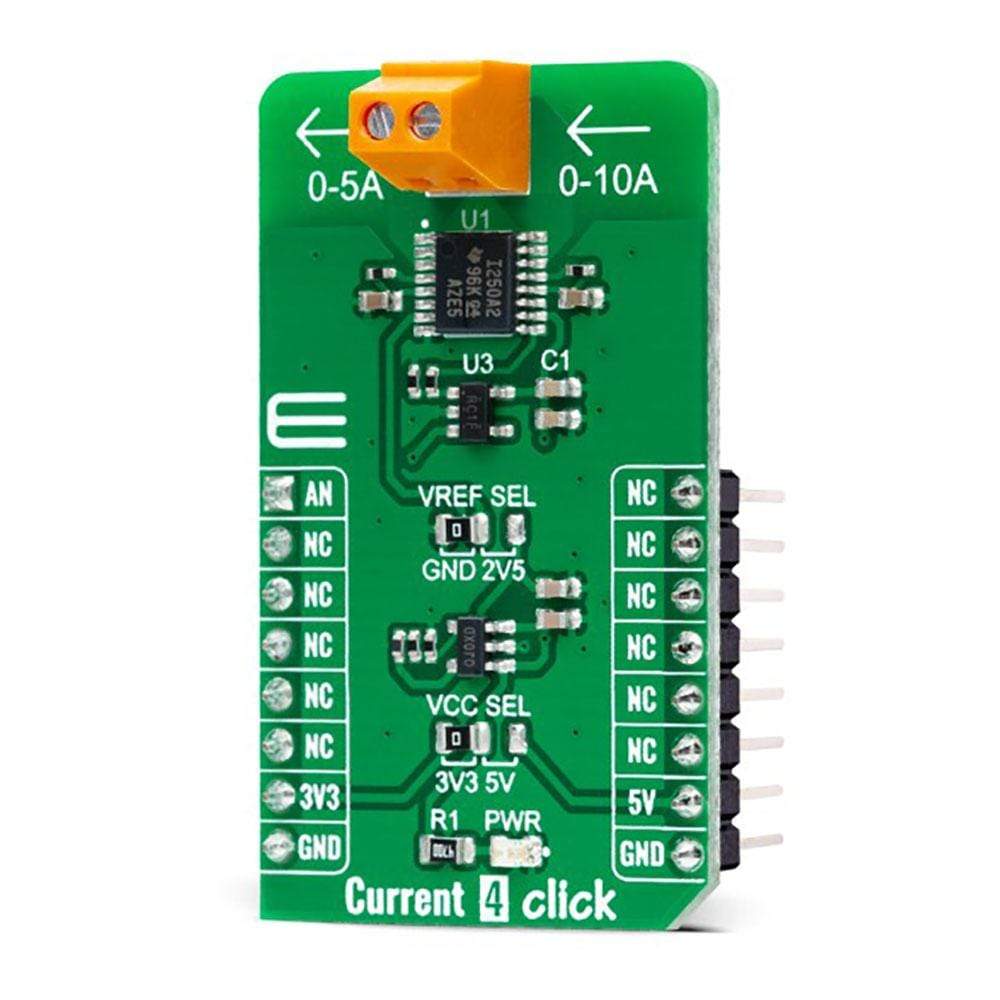
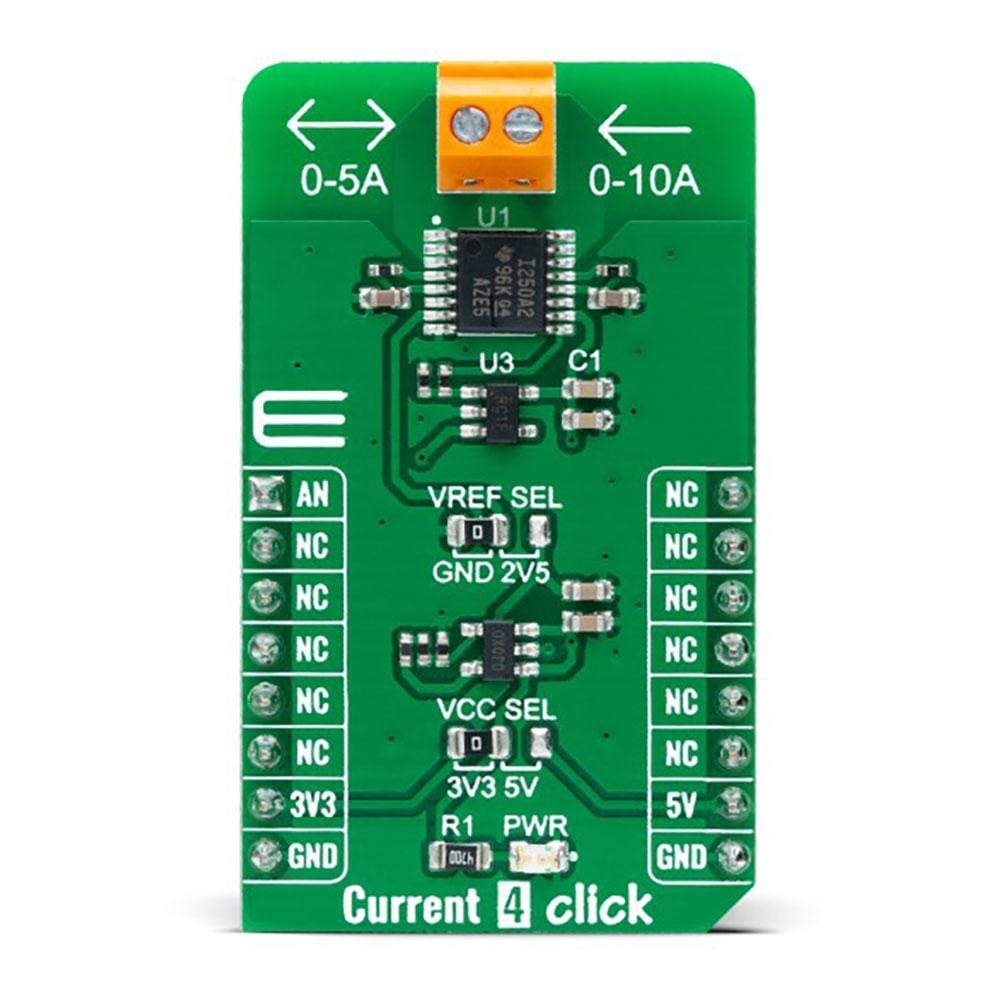
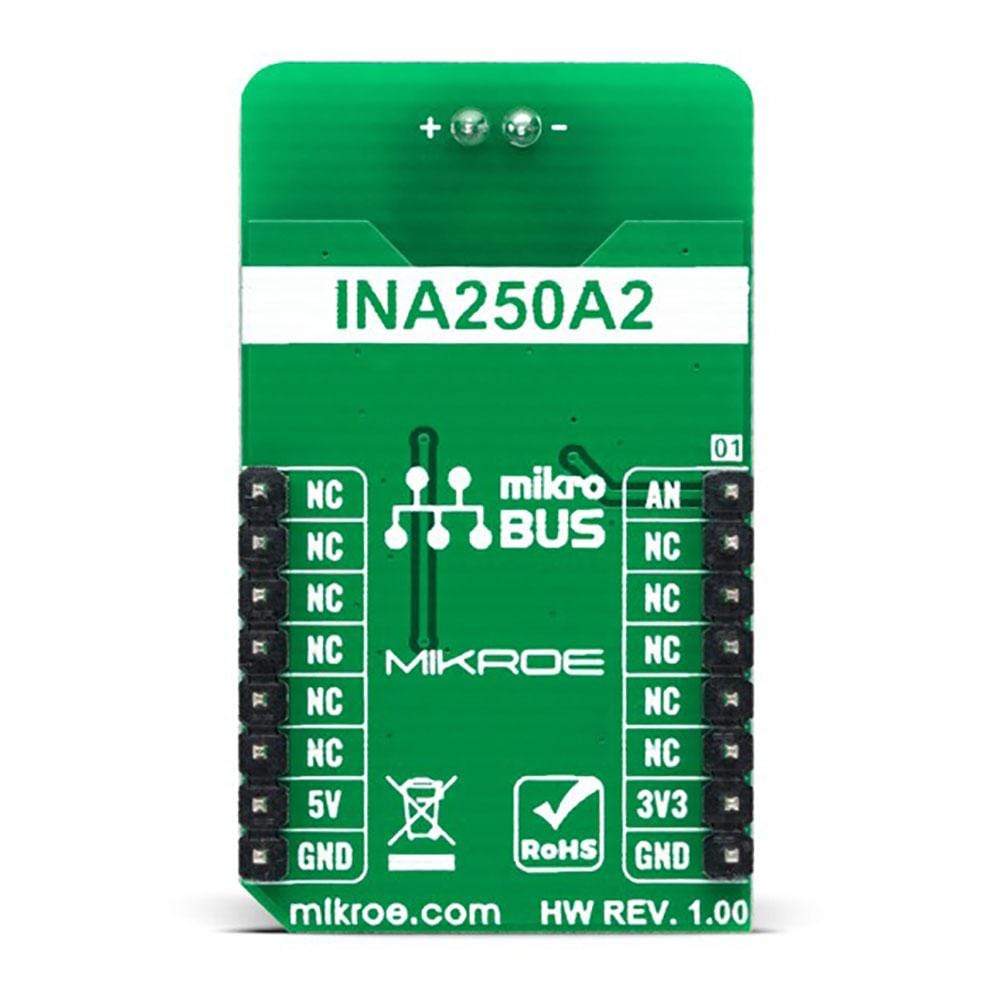
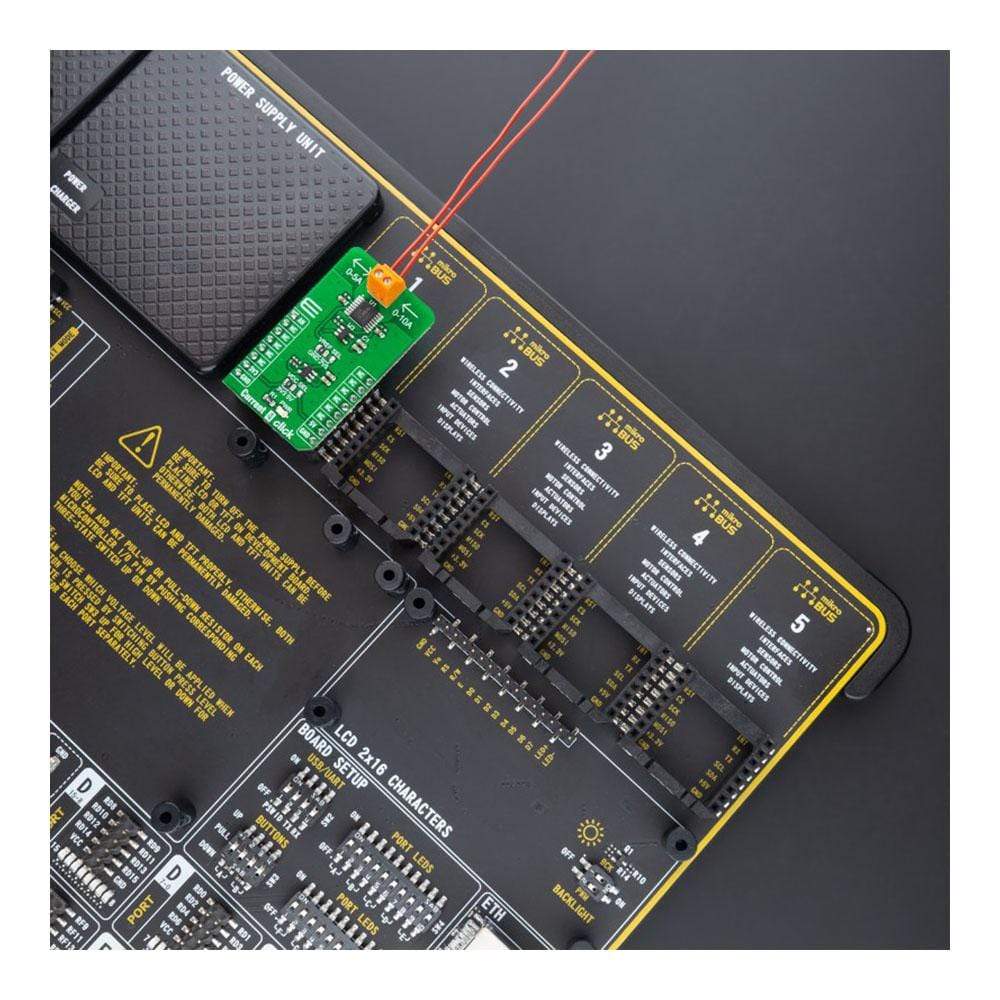
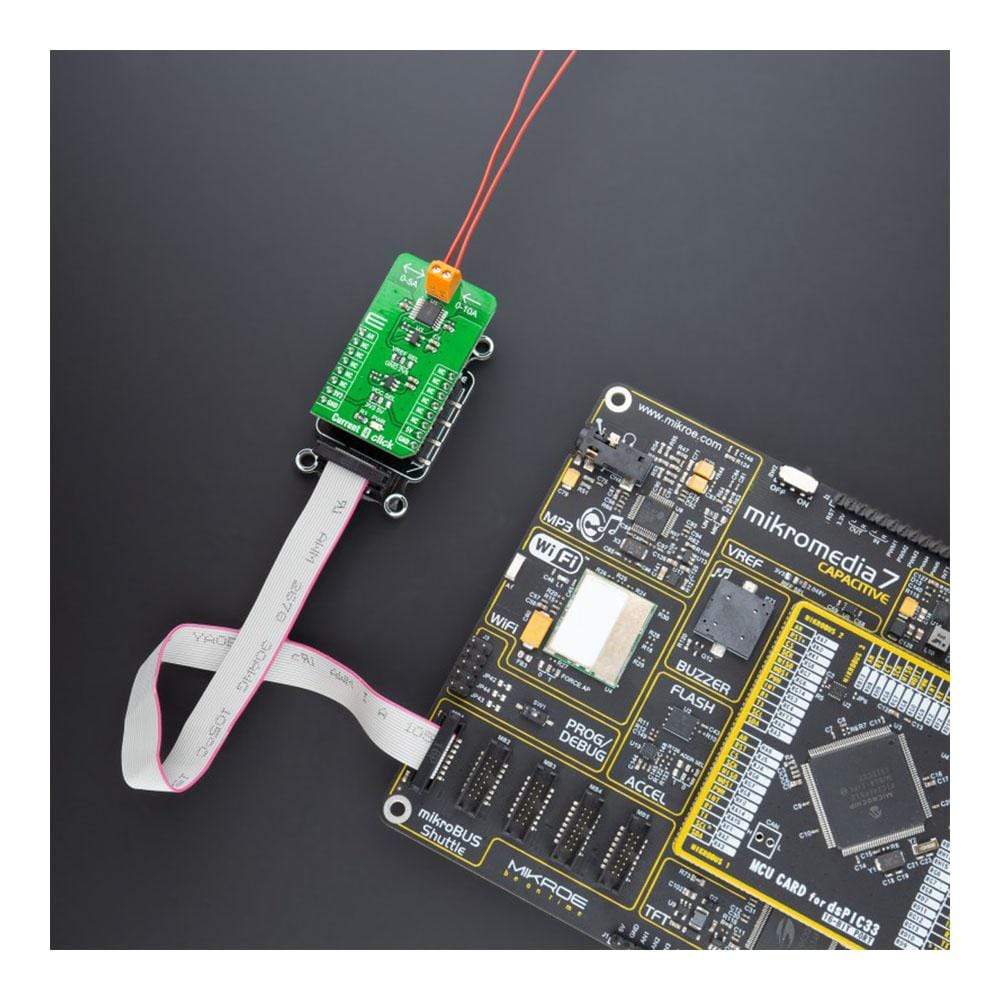
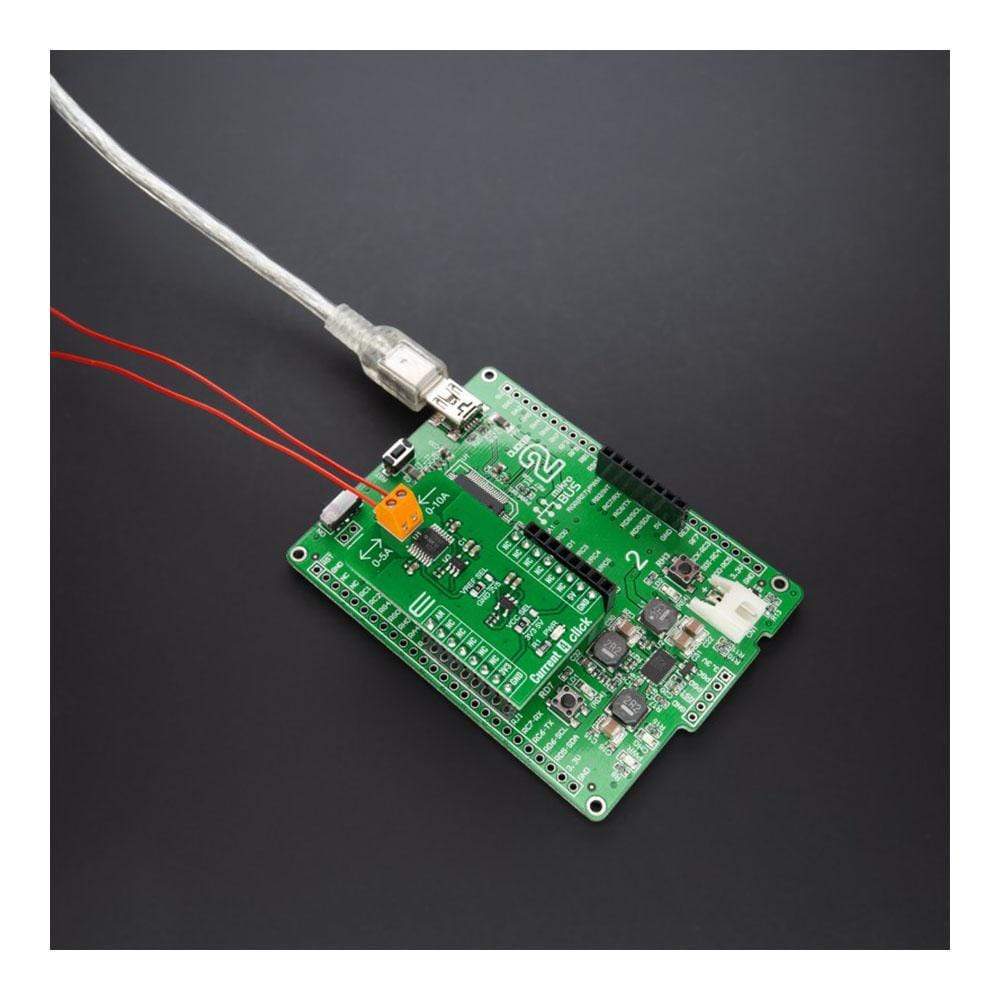
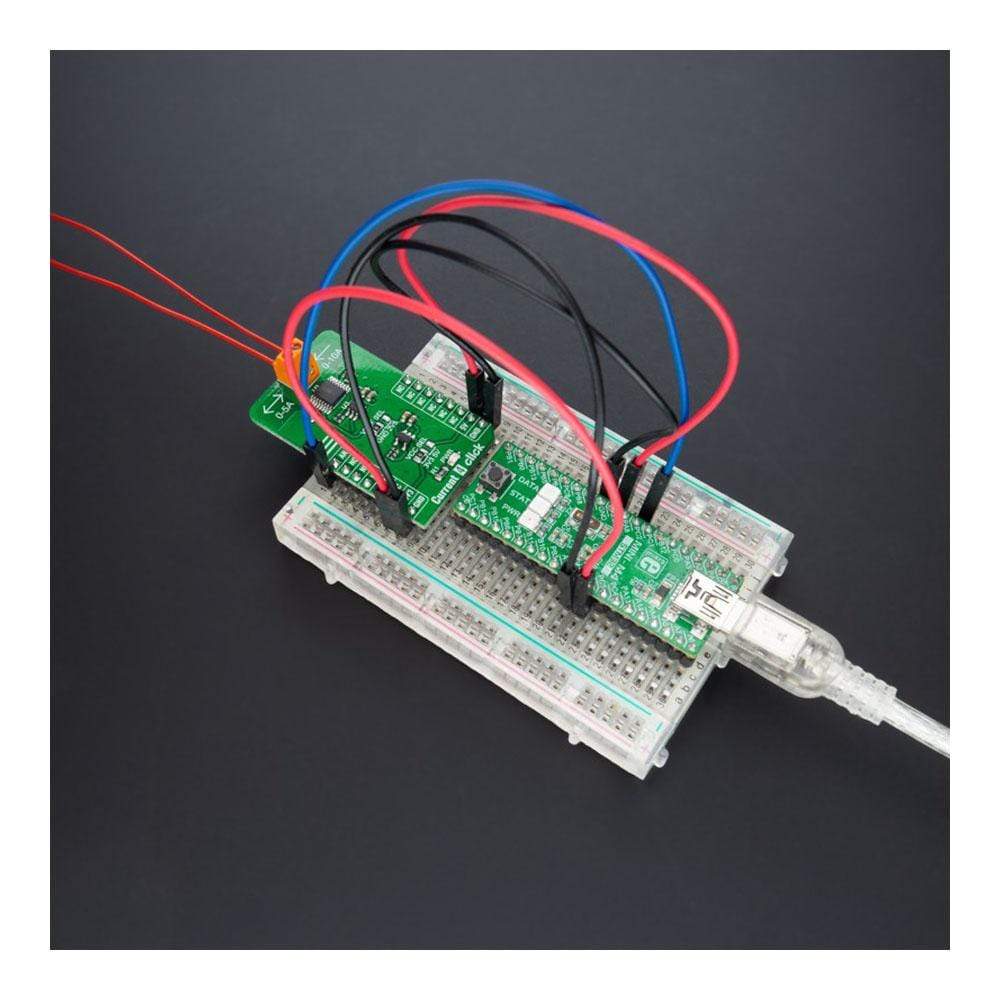
Overview
The Current 4 Click Board™ is a compact add-on board that provides a precise and accurate current sensing solution. This board features the INA250, a bidirectional, zero-drift current-shunt monitor from Texas Instruments. This voltage-output, current-sensing amplifier measures the voltage developed across the internal current-sensing resistor when current passes through it. Also, by selecting the reference voltage, the INA250 allows users to measure both unidirectional and bidirectional currents through the current-sensing resistor. This Click Board™ delivers higher performance to applications such as test and measurement, load monitoring and power supplies, automotive, and many more.
The Current 4 Click Board™ is supported by a mikroSDK compliant library, which includes functions that simplify software development. This Click Board™ comes as a fully tested product, ready to be used on a system equipped with the mikroBUS™ socket.
Downloads
Le Planche à 4 clics actuelle™ est une carte complémentaire compacte qui fournit une solution de détection de courant précise et exacte. Cette carte comprend l'INA250, un moniteur de shunt de courant bidirectionnel à dérive nulle de Texas Instruments. Cet amplificateur de détection de courant à sortie de tension mesure la tension développée à travers la résistance de détection de courant interne lorsque le courant le traverse. De plus, en sélectionnant la tension de référence, l'INA250 permet aux utilisateurs de mesurer les courants unidirectionnels et bidirectionnels à travers la résistance de détection de courant. Cette Click Board™ offre des performances supérieures aux applications telles que les tests et mesures, la surveillance de charge et les alimentations électriques, l'automobile et bien d'autres.
Le Planche à 4 clics actuelle™ est pris en charge par une bibliothèque compatible mikroSDK, qui comprend des fonctions qui simplifient le développement logiciel. Cette Click Board™ est un produit entièrement testé, prêt à être utilisé sur un système équipé du socket mikroBUS™.
| General Information | |
|---|---|
Part Number (SKU) |
MIKROE-4755
|
Manufacturer |
|
| Physical and Mechanical | |
Weight |
0.02 kg
|
| Other | |
Country of Origin |
|
HS Code Customs Tariff code
|
|
EAN |
8606027383458
|
Warranty |
|
Frequently Asked Questions
Have a Question?
Be the first to ask a question about this.







